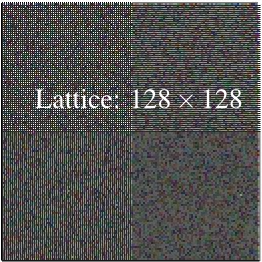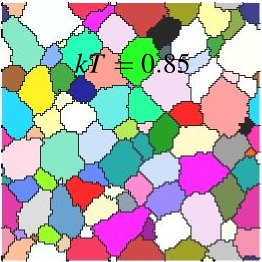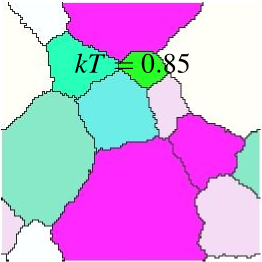Hands on¶



Try these variations and make simple observations¶
Run lattice \(128\times 128,\; kT=1.25\)
Run lattice \(156\times 156,\; kT=.33\)
Try a different lattice type (tri)
If you have an mpi build of spparks
mpiexec -np 2 spk_flame.gnu -var kT $kT -var N $N -var Q $Q < grain_growth.in
What does the energy column/tally imply?
Time Naccept Nreject Nsweeps CPU Energy 0 0 0 0 0 8.3886e+06 55.8037 8151847 0 16 5.76 1.22051e+06 106.508 10436619 0 22 9.23 928128 150.774 11995846 0 27 14.4 794076 205.157 13620596 0 33 17.6 689672 251.346 14834712 0 38 21 624934 300 15991604 0 44 26 572196Change the number of spin values \(Q\)